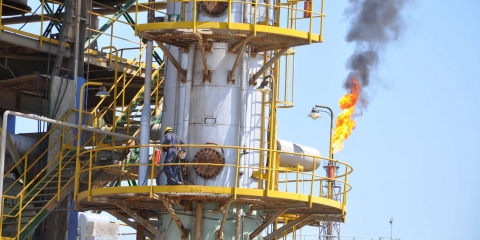Expeditionary Advising: Enabling Iraqi Operations from the Gates of Baghdad through Eastern Mosul
In May of 2016, Task Force (TF) Strike, 2nd Brigade Combat Team, 101st Airborne Division (Air Assault), assumed the responsibility of advising and assisting the Iraqi Security Forces (ISF) in their fight to defeat the Islamic State of Iraq and Syria (ISIS). At the time, the ISF were at a critical point of transition. In […]Ryan Wylie, Aaron Childers and Brett Sylvia write for Small Wars Journal:
In May of 2016, Task Force (TF) Strike, 2nd Brigade Combat Team, 101st Airborne Division (Air Assault), assumed the responsibility of advising and assisting the Iraqi Security Forces (ISF) in their fight to defeat the Islamic State of Iraq and Syria (ISIS). At the time, the ISF were at a critical point of transition. In the preceding 18 months, the ISF and Kurdish forces stopped the advance of ISIS and established a stable defensive line extending from Baghdad and Erbil, stretching north along the Tigris River past Bayji, and extending west along the Euphrates River past Ramadi and out to Al Assad Airbase. To prepare and conduct operations to ultimately oust ISIS from Mosul, the ISF required capable advisors spread across their 14 Division formations. As the only Brigade Combat Team (BCT) in Iraq, this task fell to TF Strike. As a result, TF Strike developed an approach to expeditionary advising focused on maintaining a persistent presence forward with Iraqi partners, leveraging precision capabilities, and building a robust advisor network. Understanding the critical elements of this transformation can help inform current policy discussions on the future role of U.S. ground forces in Iraq, Syria, and elsewhere, and is particularly relevant to future advising concepts, specifically the nascent U.S. Army Security Force Assistance Brigades.
Just prior to TF Strike’s arrival, the ISF, led by the Iraqi Counter Terrorism Services (CTS), conducted limited offensive operations to retake the key population centers of Bayji and Ramadi. The liberation of Fallujah was on-going and would be complete in the ensuing two months. Although ISIS retained control of key Lines of Communication (LOC) into Mosul and the surrounding areas, to include the outlying cites of Hawija and Shargot, the ISF had regained the initiative and, along with the Combined Joint Forces Land Component Command (CJFLCC), were setting conditions for the Mosul Offensive. In April of 2016, the ISF began Operation Valley Wolf, the first major offensive operation in Northern Iraq, intended to set conditions for the eventual liberation of Mosul by reclaiming key terrain along the Tigris River and establishing an operating base at Quyarrah-West Airbase (Q-West).
Despite recent success in the Euphrates River Valley, there was little confidence Iraqi forces were up to the task of retaking Mosul. Aside from the CTS, the ISF force reconstituted after the invasion of ISIS remained largely untested in their ability to project combat power away from Baghdad and conduct sustained offensive operations. In the ongoing fight in Fallujah, the ISF demonstrated a limited ability to get multiple ISF components, specifically the CTS, Iraqi Army, and Federal Police, into the fight simultaneously and de-conflict their actions. Despite this improvement, synchronization of these different branches of the Iraqi security forces remained elusive. Ultimately, the Fallujah attack became a race to the town center between competing ISF forces. Additionally, there was a reluctance to dedicate forces towards Mosul as the ISF remained a Baghdad-based force with 60% of the Iraqi combat power and 100% of the logistics focused around the capital due to security concerns. In fact, throughout the summer of 2016, the Iraqi Prime Minister periodically recalled elements of the ISF to secure the city from Sadrist protestors and ISIS terrorist attacks.





